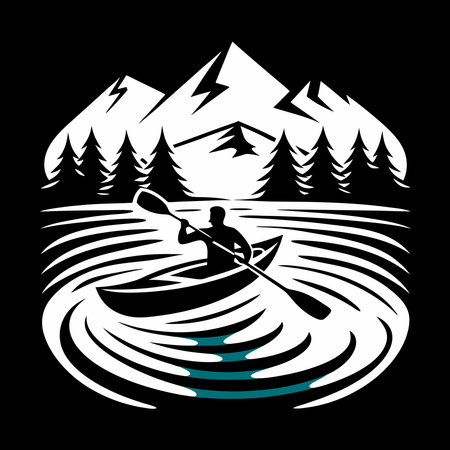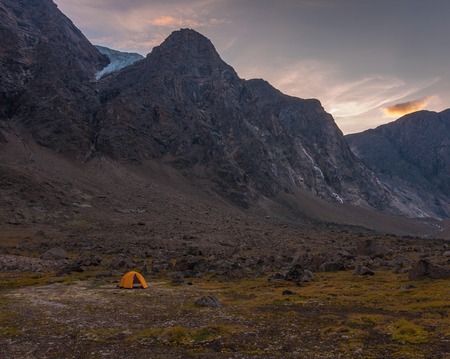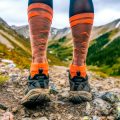1. Understanding Wilderness First Aid Basics
Whether you’re hiking the Pacific Crest Trail, rock climbing in Joshua Tree, or paddling through the Boundary Waters, knowing wilderness first aid is a must for every outdoor adventurer in the U.S. Unlike urban environments where emergency services are just a phone call away, being outdoors often means help could be hours—or even days—away. That’s why understanding the basics of wilderness first aid can make all the difference.
What Is Wilderness First Aid?
Wilderness first aid (WFA) is emergency care provided in remote settings where advanced medical help is not immediately available. It’s specifically designed for outdoor situations, which often require improvisation and resourcefulness. WFA goes beyond what you learn in typical urban first aid courses by considering limited supplies, delayed rescue times, and unique environmental risks.
How Is It Different from Urban First Aid?
| Aspect | Urban First Aid | Wilderness First Aid |
|---|---|---|
| Location | Cities & towns with easy access to EMS | Remote areas far from immediate help |
| Response Time | Minutes | Hours or longer |
| Supplies Available | Standard first aid kits, nearby pharmacies/hospitals | Limited gear; must improvise with what’s on hand |
| Treatment Duration | Short-term until EMS arrives | Prolonged care; may need to stabilize for extended periods |
| Evacuation Needs | Usually unnecessary or simple transport | May require complex rescue or self-evacuation |
When Is Wilderness First Aid Needed Most?
You’ll rely on wilderness first aid any time you’re more than an hour away from professional medical assistance. Common scenarios include:
- Backpacking trips in national parks like Yellowstone or Yosemite.
- Canoeing expeditions in remote rivers such as those in Alaska or Minnesota.
- Ski touring in the Rockies during winter storms.
- Multi-day climbing adventures at places like Red River Gorge.
- Desert treks in the Southwest where cell service is spotty or nonexistent.
The Bottom Line: Be Prepared!
No matter your adventure style—whether you’re a weekend warrior or a thru-hiker—having basic wilderness first aid knowledge isn’t just smart; it’s essential for your safety and the well-being of your group.
2. Assessing Emergencies in Remote Settings
When you’re out in the backcountry, miles from the nearest road or hospital, knowing how to assess a medical emergency is crucial. Quick and accurate evaluation can make all the difference for you or your group. Here’s what every outdoor adventurer should know about assessing emergencies when help may be hours—or even days—away.
Stay Calm and Take Charge
Panic helps no one. The first step is to take a deep breath and keep calm. If you’re with others, let them know you’ve got the situation under control. This calms everyone and allows you to focus on what’s important: figuring out exactly what happened and how serious it is.
The Primary Assessment: Check for Life-Threatening Problems
Start with a primary assessment using the ABCs:
| Step | What to Do |
|---|---|
| A – Airway | Make sure the person’s airway is clear. If they’re talking, their airway is open. |
| B – Breathing | Check if they’re breathing normally. Look, listen, and feel for breaths. |
| C – Circulation | Check for a pulse and signs of serious bleeding. Control any major bleeding right away. |
If You Find a Life-Threatening Problem
Deal with it immediately. For example, if someone isn’t breathing, start rescue breathing. If there’s heavy bleeding, apply direct pressure to stop it.
The Secondary Assessment: Head-to-Toe Check
If there are no immediate life threats, do a more detailed check:
- Ask what happened (if they’re conscious).
- Look for injuries: bruises, cuts, swelling, deformities.
- Feel gently for tenderness or pain along limbs and spine.
- Check for medical ID bracelets or cards.
Monitor Vital Signs Regularly
Keep track of the injured person’s vital signs every 15-30 minutes:
| Vital Sign | What to Check |
|---|---|
| Pulse | Is it fast, slow, strong, or weak? |
| Breathing Rate | How many breaths per minute? Is breathing labored? |
| Level of Responsiveness | Are they alert? Confused? Unresponsive? |
| Skin Color & Temperature | Pale, flushed, clammy, hot, or cold? |
The Importance of SOAP Notes in the Wilderness
S.O.A.P. notes (Subjective, Objective, Assessment, Plan) are standard in wilderness medicine for documenting everything you observe and do. They help you communicate clearly if you need to call for help or hand off care later.
S.O.A.P. Example:
- S: What the patient tells you (“My leg hurts after I tripped.”)
- O: What you see/feel (Swelling above ankle; can’t bear weight.)
- A: Your best guess at what’s wrong (Suspect sprained ankle.)
- P: What you did/plan to do (Splinted ankle; will monitor; plan evacuation.)
Remember: When in Doubt, Treat as Serious Until Proven Otherwise!
If you’re unsure about the severity of an injury or illness in a remote setting, always err on the side of caution. Early assessment and proper documentation can be lifesaving when far from professional help.

3. Essential First Aid Skills for the Backcountry
When you’re miles from the nearest trailhead and something goes wrong, having wilderness first aid skills can make all the difference. Every American outdoor adventurer—whether you’re hiking the Rockies, backpacking in Yosemite, or camping in the Smokies—should know how to handle medical emergencies with limited resources. Here are the core hands-on skills you need to master before your next trip into the wild.
Splinting: Immobilize Like a Pro
If someone in your group sprains an ankle or breaks a bone, stabilizing the injury is crucial until you can get help. In the backcountry, splints don’t have to be fancy—you can use trekking poles, sturdy sticks, foam pads, or even rolled-up clothing. The goal is to keep the injured area from moving and causing further damage.
| Material | How to Use for Splinting |
|---|---|
| Trekking Poles/Branches | Place on either side of the limb, pad with clothing, and secure with bandanas or tape. |
| Sleeping Pad/Foam Mat | Wrap around the injured limb and tie it off gently but firmly. |
| Clothing (Jackets/Socks) | Use as padding under makeshift splints or for extra support. |
Wound Care: Clean and Cover
Cuts and scrapes are common on the trail. Infections set in fast when you’re far from civilization, so clean wounds as soon as possible—even if it means using your drinking water. After rinsing out dirt and debris, apply antibiotic ointment and cover with sterile gauze or a clean bandana. Change dressings daily if you’re still out in the wild.
Quick Steps for Wilderness Wound Care
- Wash hands if possible—use hand sanitizer if that’s all you have.
- Irrigate the wound thoroughly with clean water.
- Remove any visible debris carefully with sanitized tweezers.
- Apply antibiotic ointment if available.
- Cover with a sterile dressing or clean cloth.
- Check daily for signs of infection (redness, swelling, pus).
CPR Modifications for Remote Settings
If someone stops breathing or loses consciousness far from help, traditional CPR guidelines still apply—but there are some wilderness-specific considerations:
- Lone Rescuer: If you’re alone and have no cell service, give two minutes of CPR before leaving to get help.
- No Rescue Breaths? Compression-only CPR is better than nothing if you’re not trained for rescue breaths.
- AED Access: Most remote areas won’t have AEDs—focus on chest compressions until advanced help arrives.
| Situation | Your Action |
|---|---|
| Lone rescuer, no signal | 2 minutes CPR → leave to find help |
| Lone rescuer, has signal | Call 911 first → start CPR until help arrives or youre exhausted |
| No AED available | Continue chest compressions; dont stop except for rescue breaths if trained and able |
Your Wilderness First Aid Kit Checklist
Packing smart is just as important as knowing what to do. Heres a quick checklist for essential first aid gear every backcountry explorer should carry:
- Sterile gauze pads & adhesive bandages
- Medical tape & elastic wraps (ACE)
- Tweezers & small scissors
- Pain relievers (ibuprofen/acetaminophen)
- Antibiotic ointment packets
- Moleskin/blister treatment supplies
- Nitrile gloves & hand sanitizer
- An emergency blanket (space blanket)
Learning these essential skills will help you stay calm and prepared when things don’t go as planned outdoors. Practice them at home and review your first aid kit before every adventure—you’ll be ready for whatever nature throws your way!
4. Building Your Wilderness First Aid Kit
Why a Thoughtful First Aid Kit Matters
Every outdoor adventure in the U.S.—from backpacking in the Rockies to hiking the Appalachian Trail—comes with its own set of risks. That’s why having a well-stocked and thoughtfully customized wilderness first aid kit is essential. The right supplies help you handle injuries, illnesses, and emergencies until you can get professional medical help.
Must-Have Items for Every Wilderness First Aid Kit
| Item | Purpose | Notes |
|---|---|---|
| Adhesive Bandages (various sizes) | Cover minor cuts, scrapes, and blisters | Packed for quick access; consider waterproof options |
| Sterile Gauze Pads & Roll Bandages | Dress larger wounds or burns | Bring multiple sizes for flexibility |
| Medical Tape | Secure dressings and splints | Hypoallergenic tape recommended |
| Tweezers & Safety Pins | Remove ticks, splinters, or debris from wounds | Tweezers should be fine-tipped; pins useful for gear fixes too |
| Moleskin or Blister Treatment Pads | Prevent and treat blisters on long hikes | Cushion hotspots before they become blisters |
| Antiseptic Wipes/Ointment (like Neosporin) | Clean wounds and prevent infection | Single-use packets are lightweight and easy to pack |
| Pain Relievers (Ibuprofen, Acetaminophen) | Treat pain, headaches, or inflammation | Pill organizer keeps meds dry and organized |
| Allergy Medication (Antihistamine) | Treat allergic reactions, bug bites, stings | Benedryl or similar; EpiPen if prescribed by doctor for severe allergies |
| SAM Splint or Foldable Splint Device | Immobilize fractures or sprains until help arrives | SAM splints are lightweight and versatile for arms/legs/fingers/toes |
| Nitrile Gloves (multiple pairs) | Protect yourself while treating others’ injuries or bodily fluids | Avoid latex due to allergy risk; pack 2-3 pairs minimum |
| CPR Mask/Face Shield | Provide rescue breaths safely in emergencies | Pocket-sized and easy to use even with limited training |
| Duct Tape (small roll) | Temporary gear repair, extra wound protection | An all-purpose tool in any kit; wrap some around your water bottle |
Customizing for Different Environments Across the U.S.
The Rockies: High Altitude and Variable Weather
- Add electrolyte tablets or powder to help prevent altitude sickness and dehydration.
- Packing an emergency blanket helps fight unexpected cold snaps.
- Lip balm with SPF and sunscreen protect against intense UV rays at elevation.
The Appalachians: Humidity, Bugs, and Dense Forests
- Add insect repellent wipes/spray and tick removal tools due to high bug activity.
- A compact rain poncho can double as shelter in sudden downpours.
- Mold-resistant adhesive bandages help wounds heal in damp conditions.
The Southwest: Desert Heat and Sun Exposure
- Add extra oral rehydration salts for heat illness prevention.
- Aloe gel packets help soothe sunburns.
- Sunglasses and cooling neck gaiters offer protection from harsh sun.
Packing Tips for Every Adventurer
- Store your first aid kit in a waterproof pouch or resealable bag.
- Check expiration dates on medications regularly—replace as needed before each trip.
- If traveling with pets or kids, include their specific needs like child-safe medicine or pet wound care items.
A smartly packed wilderness first aid kit gives you confidence to handle emergencies no matter where your American adventures take you—from mountain peaks to forest trails.
5. Decision Making and Evacuation Strategies
When you’re deep in the backcountry, making the right call between staying put or starting an evacuation can be the difference between a successful rescue and a dangerous situation. Let’s break down how to make smart choices and communicate effectively with Search and Rescue (SAR) teams.
Stay Put or Go? Key Questions to Ask
Before you move, take a moment to assess your situation. Use the following questions to guide your decision:
| Question | Why It Matters |
|---|---|
| Is the person’s life at immediate risk? | If yes, evacuation may be urgent. |
| Can you safely move without making things worse? | Moving an injured person can cause more harm if not done carefully. |
| Do you have enough resources (food, water, shelter)? | If supplies are running low, staying may not be safe. |
| Is help nearby or easy to reach? | If not, signaling for help might be best. |
| What is the weather like now and in the next 24 hours? | Bad weather can make travel or waiting more dangerous. |
How to Communicate with Search and Rescue Teams
Good communication saves time and lives. Here’s how to connect with SAR teams effectively:
- Use Emergency Devices: Carry a satellite messenger, personal locator beacon (PLB), or GPS device. Cell service isn’t reliable in remote areas.
- Send Clear Information: Give your exact location (GPS coordinates if possible), number of people in your group, description of injuries, and current weather conditions.
- Stay Where You Can Be Seen: If safe, stay in open areas so rescuers can spot you from the air or ground.
- Signal for Help: Use bright colors, signal mirrors, or create large symbols (like “SOS”) on the ground if technology fails.
SAR Communication Checklist
| Information to Share | Description |
|---|---|
| Your Location | GPS coordinates or landmark details |
| Status of Injured Person(s) | Breathe/pulse, conscious/unconscious, main injuries |
| Your Supplies | Food, water, shelter available |
| Your Group’s Condition | Total people, any other medical needs |
| Your Plan | If you plan to stay put or move—be clear! |
Tips for Safe Evacuation Moves
- Pace yourself—don’t rush unless absolutely necessary.
- Avoid rough terrain if possible; stick to established trails when moving an injured person.
- If carrying someone out, build a stretcher from sturdy branches and clothing if needed.
- Always leave markers behind if you move—so rescuers know which direction you went.
- If unsure what to do: Stay put! Moving without a plan can make it harder for help to find you.


